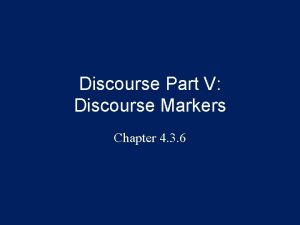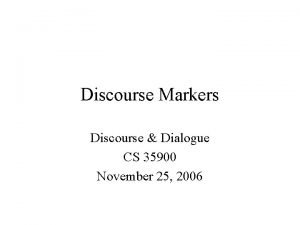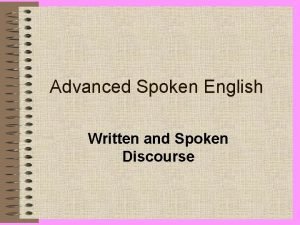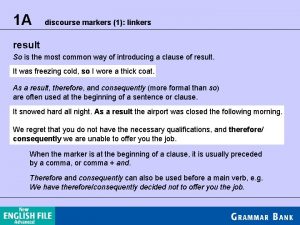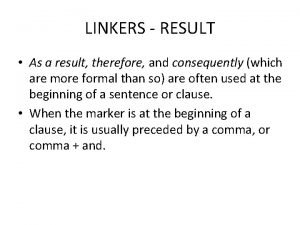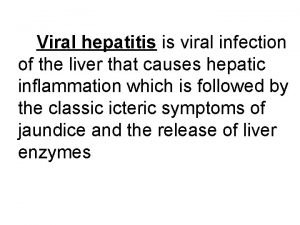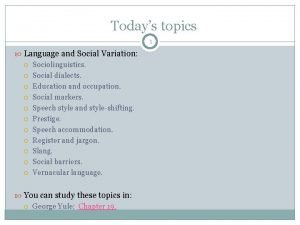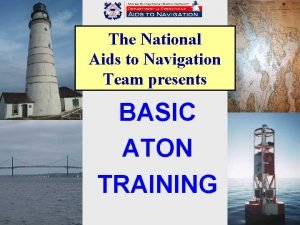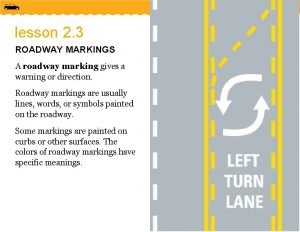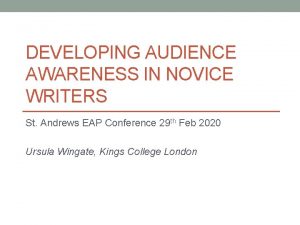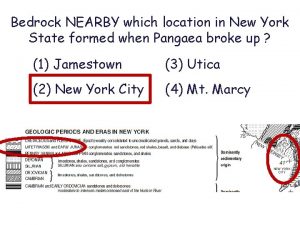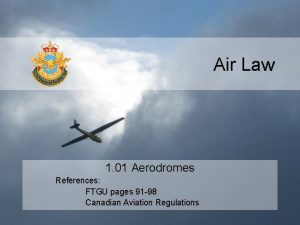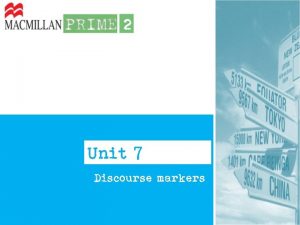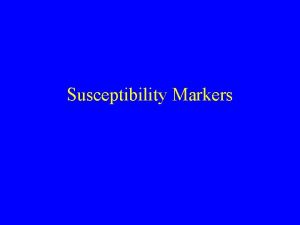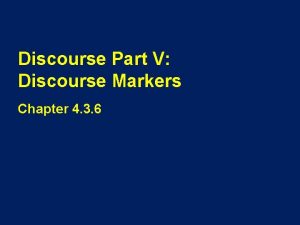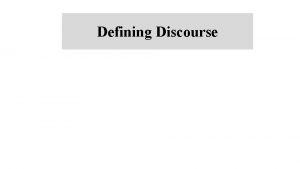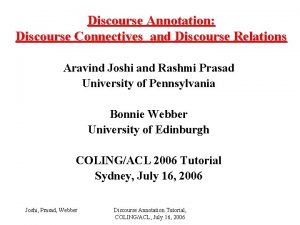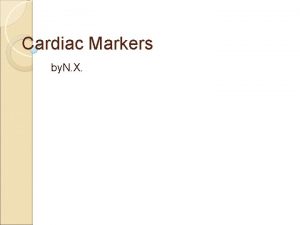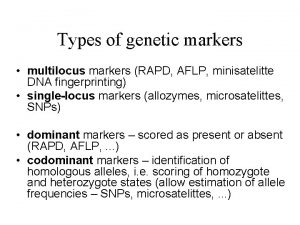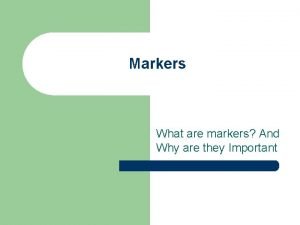Discourse Part V Discourse Markers Chapter 4 3


















- Slides: 18

Discourse Part V: Discourse Markers Chapter 4. 3. 6

Overview • This presentation gives a small introduction to the topic of discourse markers and a few examples in both ASL and English. • It also includes a few markers that are borrowed from ASL but used more commonly in TASL (or with deaf people who have very limited vision).

Discourse Markers • Discourse, when executed well, makes it clear – Who ‘has the floor’ (turn taking) – The topic (what are we talking about) – The parts of the text (e. g. background vs. the point or focus of the text), and – The motivation or purpose of the text (reason for saying something and what are the implications).

Importance • Discourse markers and other cues are especially important in writing or when communicating with a DB person. This is because in both written text and when the person is both deaf and blind, there is less context external to the text. • The text itself must therefore be even more clear.

Discourse Markers: Purpose

“FYI / Let-You-Know” • This tells the listener that what follows is just information (no follow up required). • The ASL sign glossed “inform-you” or “let you know” serves this purpose. • The English words “for your information” or “just so you know. . ” serves this purpose.

“Curious” • Questions are marked both verbally and nonverbally. • The ASL sign glossed “curious” informs the listener that a question follows. • English establishes questions in other ways, for example “So, do…”

? ? • A question mark is always used in print. It is sometimes used in ASL. • The ASL question-mark sign can be inflected several ways. One inflection can be used as an equivalent to the English “A question for you…”. • When the non-verbal cues are missing, verbal indicators are more important.

Discourse Markers: Chunking Into Parts/Sections

“Off-Point” • It is useful to signal a change of topic. • The ASL sign glossed “off-point” is used in this way. • English often uses the word “anyway…”.

“Put-Aside • This too indicates a change of topic but refers to the fact that the previous topic is completed whereas the “off-point” indicates a temporary digression. • English spoken discourse often marks the conclusion of one segment and the beginning of another, as in “OK”. A more formal version might be “Putting that aside for the moment…”

Rh Q • Rhetorical questions are common in ASL and thus in Tactile ASL. They serve a similar function in English and ASL, i. e. to put emphasis on the point made in the ‘answer’. • The sentence “the ice caused the car to slide off the road” becomes “the cars slid off the road why? Because of the ice on the road. ”

Discourse that Marks Visual Information

“Visual-Information Discourse” • There a few markers used specifically by SSPs (hearing/sighted people) with DB people to provide visual/auditory information – information that would not be made explicit for people who were not blind/deaf.

“Warn” • It is used to inform the DB person of something they need to pay attention to in the present time (e. g. “There is a cord/hose across the floor. ”) • The gloss is “warning” but that English word is too strong for this meaning. It’s similar to “heads-up” but there is more immediacy.

“Suspend/Hold” • This ASL sign indicates a temporary pause in the SSP’s attention as in when someone else calls the SSP’s name and the SSP pauses the focus on the DB person to see what is needed. • English speakers might say “Just a minute…” or “Hang-on…” • It is followed with an explanation to the DB person.

“Person/Car-Approaching” • This is used to indicate an interruption by another person approaching (e. g. a wait-staff in a restaurant) or car, etc. • It indicates the focus of the SSP’s attention, the reason, and the direction from which they are coming.

Conclusion • Discourse markers are important because they help contextualize your comments and thus make them more clear. • This is especially important for listeners who do not have the benefit of visual/auditory context cues. • This list just scratches the surface. Look for more.
 Discourse markers examples
Discourse markers examples Written discourse markers
Written discourse markers Discourse markers examples
Discourse markers examples Discourse markers
Discourse markers Written and spoken discourse
Written and spoken discourse Discourse linkers
Discourse linkers Consequently therefore
Consequently therefore Discourse in linguistics
Discourse in linguistics Hepatitis a b c
Hepatitis a b c A whalebone that originally contained 200 grams
A whalebone that originally contained 200 grams Define overt prestige
Define overt prestige Floating red markers nuns shape
Floating red markers nuns shape Stansw meet the markers
Stansw meet the markers Solid yellow line and broken yellow line
Solid yellow line and broken yellow line Characteristics of genetic markers
Characteristics of genetic markers Novice audience
Novice audience Thin layers of volcanic ash act as excellent time markers
Thin layers of volcanic ash act as excellent time markers 1000 foot markers runway
1000 foot markers runway Non restrictive adjective clause
Non restrictive adjective clause

